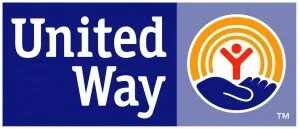September: National Suicide Month

Carol Snyder has marked 20 years of painful milestones since the death of her son, Charlie, in 1998 by suicide.
“He would have been 40 years old this year,” Carol said. A recent invitation to the 40th birthday party of one of Charlie’s childhood friends brought Snyder face to face with her loss again. “There’s a group of his friends who have stayed in touch with us all along, and they’re all turning 40 this year. That really hit me,” she said. “It never goes away. It’s been 20 years, but sometimes it feels like just yesterday. It’s just a different form of grief as time goes on, but your life is changed forever by the fallout from suicide.”
Charlie Snyder was just 20 years old when he took his own life with a firearm on Oct. 1, 1998. Young males like Charlie suffer the highest rate of any demographic group in the state. Last year, there were 192 suicides in South Dakota, (the highest number since the S.D. Department of Health began tracking death by suicide) and one-third of them were young males.
In the past decade, 384 young males under the age of 35 have died by suicide in South Dakota. “Young males of all ethnicities are at high risk,” said Jim Kinyon, CSS executive director.
The suicide rate among Native Americans, at 36.9 per 100,000, is more than twice that of whites in South Dakota, who have a suicide rate of 15.4. Overall, South Dakota has a high suicide rate of 22.1 per 100,000, significantly above the national suicide rate of 13.9. Suicide rates in counties that share borders with American Indian reservations are even higher, often driven by young males who take their own life. Todd County (Rosebud Reservation), Oglala Lakota County (Pine Ridge Reservation) and Dewey County (Cheyenne River Reservation) all average a 10-year suicide rate that is nearly 50 per 100,000, or higher. Corson County’s (Standing Rock Reservation) suicide rate is a devastating 67.8 per 100,000 people.
Carol is horrified by those numbers, but she is not surprised by them.
Young males often lack impulse control and can easily experience stress as overwhelming. If they also struggle with anxiety, depression, substance use or some other mental health issue, they are at very high risk of suicidal ideation, Kinyon said.
Like many survivors of suicide loss, Carol eventually sought professional counseling to cope with the shock of her son’s death. Questions are an inevitable part of the journey through suicide grief, said Cathy Larsen, CSS Counseling Program Director.
About 44,000 people die by suicide in the U.S. each year, and each of those deaths affects, on average, six blood relatives and many more friends, classmates, colleagues, etc.
“The grief process following a suicide death can be more complicated than other types of loss. There are often feelings of guilt, confusion, anger and the endless downward spiraling of the question of “Why?” for those left behind,” Larsen said.
Carol knew she needed professional help the day the phone rang at work and she instinctively yelled, “Don’t anybody answer that! It’s going to be bad news!”
She turned to Kinyon, who also counseled her through her late husband’s treatment for alcoholism many years ago. “CSS was there for me,” she said.
Carol knew her son was upset in the weeks before his death, but she had no idea he was suicidal. Charlie had struggled throughout high school with structure and authority and was changing jobs often as a young adult, working for minimum wage and living without health insurance. He faced mounting medical bills due to an emergency appendectomy and was dealing with medical testing for another troubling, but undiagnosed, cardiac health issue that he couldn’t afford.
“The bills that mounted up for him were ridiculous and he couldn’t pay them. He was changing jobs a lot,” his mother said. “He always thought he should have his life more together than he did. I think it was just a combination of all of that piling up on him and he couldn’t get himself to be happy. I think he felt lost and helpless to take care of things.”
Twenty years ago, suicide prevention and awareness education was less available in Rapid City. Today, Kinyon and Larsen are certified instructors for the Question, Persuade and Refer (QPR) Suicide Prevention Gatekeeper Training, as are two other CSS counselors. Last year, CSS held 29 QPR trainings for more than 580 people who learned the warning signs of suicide and a 3-step approach to preventing suicides. “Everyone is familiar with CPR, a life-saving skill that anyone can learn. The name, QPR, was chosen so people would see the similarities in the two skills,” Larsen said. “We believe that quality education empowers all people, regardless of their background, to make a positive difference in the lives of those around us.”
The goal of QPR is to equip people with the ability to ask if someone is having suicidal thoughts, the skills to persuade someone to get help, and the knowledge of local mental health resources. To schedule a QPR training by CSS staff at your school, church or community, call 348-6086.
While Carol avoided suicide survivor support groups as “not my thing,” she embraces the chance to talk about suicide prevention, education and awareness whenever the opportunity presents itself.
She speaks openly and frankly to any young person she thinks may be struggling with suicidal ideation. “God just keeps putting people in my path,” she said. As a fast-food restaurant manager for 29 years, Carol has encountered numerous teens and adults who spoke of suicide. “Working with kids like I do, you come across it. And I am really honest with them. I tell them about Charlie. And I tell them what’s going to happen to your family.”
Her son’s suicide nearly killed his father, too. Delton Snyder collapsed on the kitchen floor when he heard the news of Charlie’s suicide. He suffered a “near cardiac death” and three months later, underwent successful heart bypass surgery. He lived another 18 years. Delton died of cancer in 2016.
Charlie’s older siblings, Yvette, 44, and Tom, 42, have each had their own life-long repercussions from their brother’s suicide. “It left them feeling so afraid that they’d lose each other,” Carol said.
“The one thing we all agreed on, my husband and my other kids, was that we would never deny how he died. We would never hide it. People need to know. From the beginning, I felt that if I could do anything to keep somebody else from going through what we had to go through, I would do it.”
As South Dakota marks Suicide Prevention Month in September, Carol joins Gov. Dennis Daugaard and other state officials in urging people take advantages of services and support that are available.
“Suicide does not discriminate, people of all genders, ages and ethnicities are at risk,” said state Department of Social Services Secretary Lynne Valenti. “More than half of those who died by suicide did not have a known mental illness. By raising awareness and talking about suicide, we are letting individuals know it’s okay to ask for help.”
South Dakota has resources available to help individuals experiencing suicidal thoughts and support for those who have lost a loved one to suicide. Individuals in need of help are encouraged to call the Suicide Prevention Lifeline at 1-800-273-TALK (8255). Services are available 24/7.




